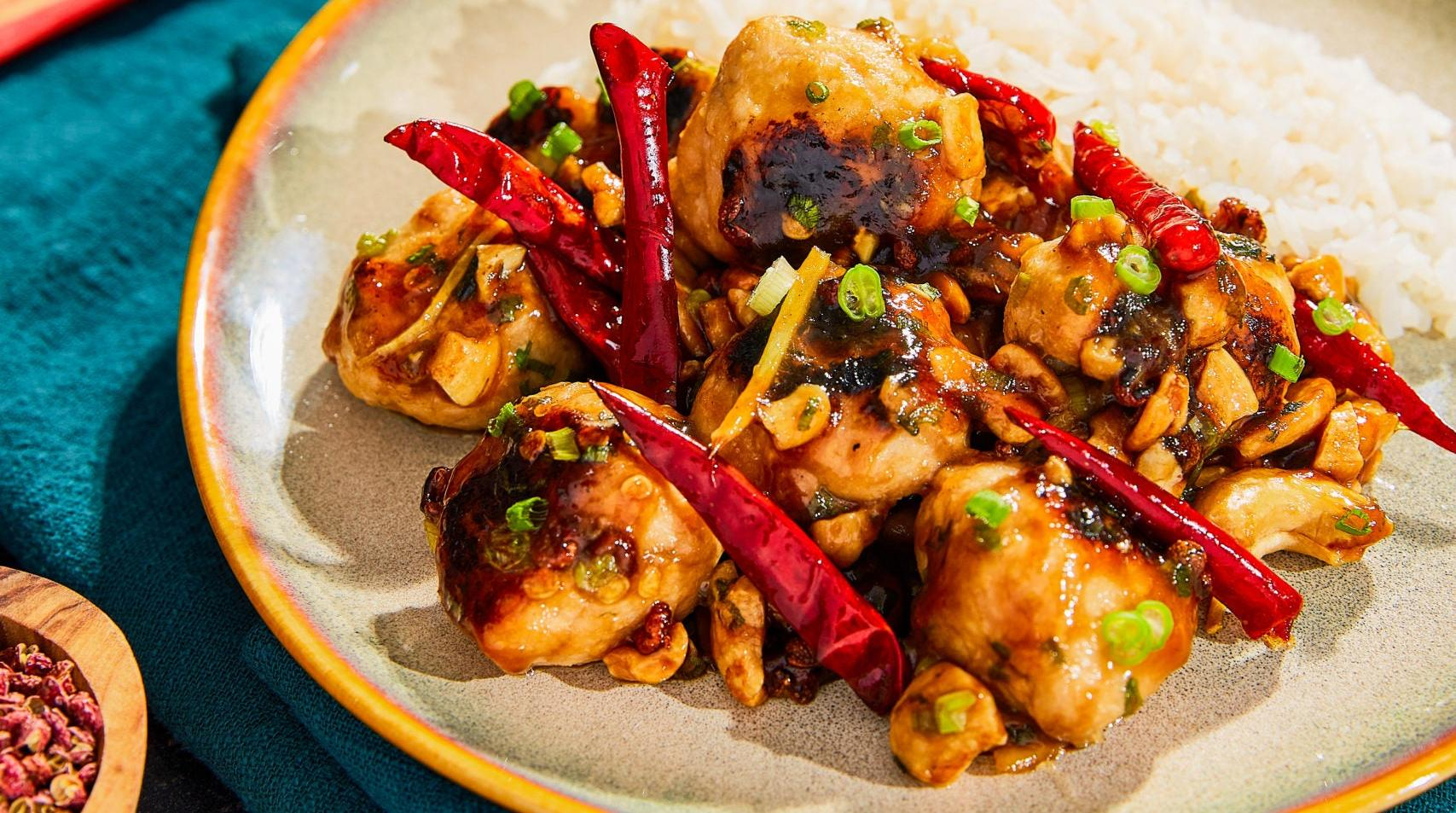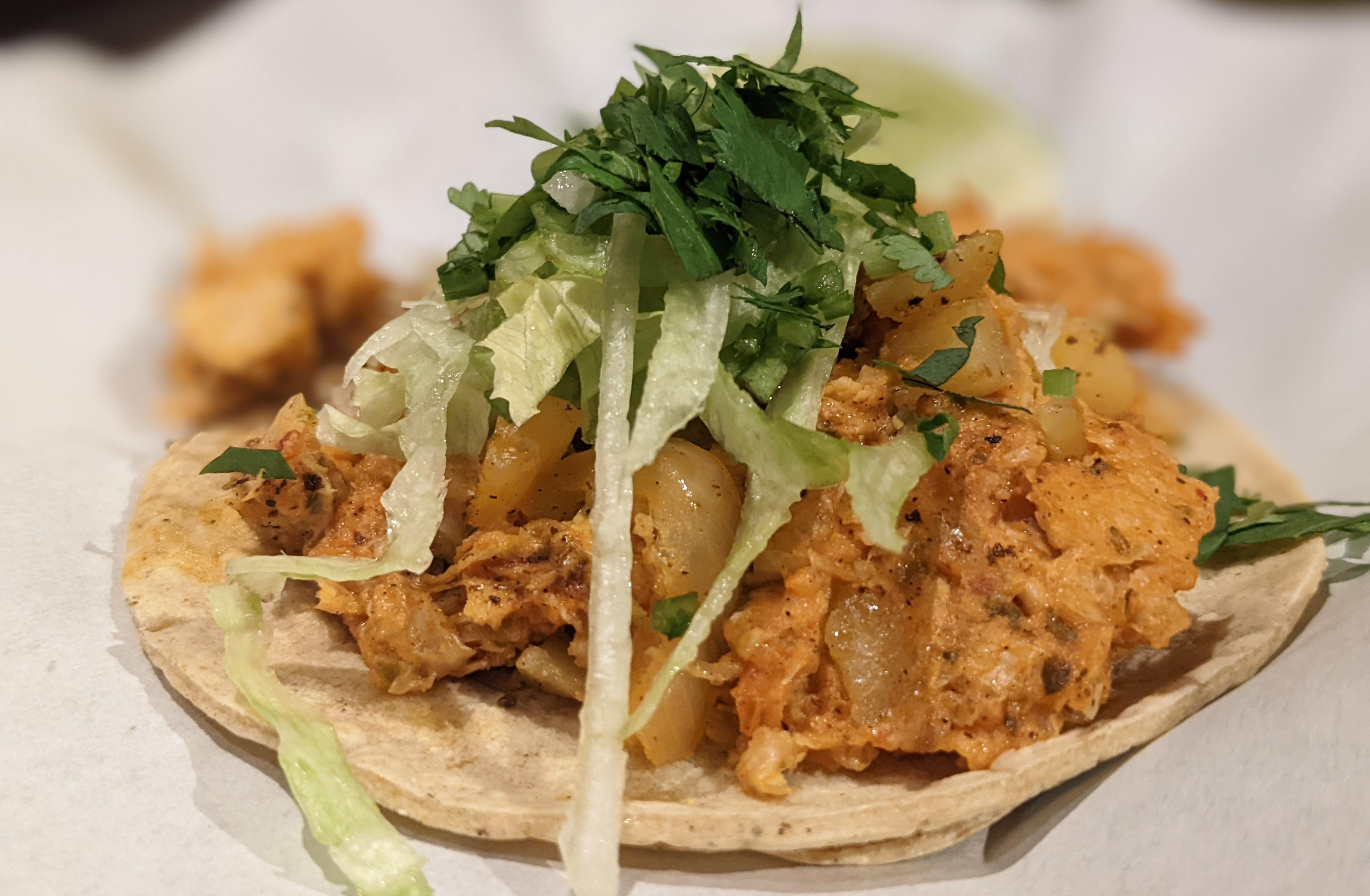Plant-Based Chicken Has Been Here All Along
Is the hot new mock poultry startup $100 million better than its Buddhist predecessor?
The other week, I started seeing posters advertising a product called Tindle. "I tried getting back together with my ex. Why wouldn't I try Tindle?" they cajoled in typical how-do-you-do-fellow-kids marketing speak.
Was it a dating app? An e-reader? No, it turns out that Tindle (actually styled TiNDLE, but ugh) is the unfortunate name given to a new brand of vegan chicken.
In February 2022, the Singapore-based, German-led team behind this "groundbreaking" foodstuff landed $100 million in Series A funding, the largest investment in the alt-meat sector to date. Tindle is now in the process of rolling out internationally: Tindle sandwiches, Tindle tacos, Tindle salads, and Tindle tenders can be found at select restaurants across the US, the UK, and Germany, as well as Singapore and Hong Kong. Mid-June saw the product launch in Berlin, my hometown and Europe's unofficial vegan capital.
Look, I get why fake meat is so hot in Silicon Valley. Never mind that it's still unclear whether the increased availability of plant-based alternatives will lead people to eat fewer animals. If you're a venture capital firm out to make a quick buck while looking like you give a damn about the planet, a pea protein patty is a more surefire investment than any actual effort to tackle our screwed-up industrial farming system. And now that the burger market has become overcrowded, it seems vegan chicken is the next big frontier.
There's just one catch: plant-based poultry has existed for over a millennium.

The ancient roots of vegan meat alternatives
As this Vice article points out, meat substitutes had a lengthy history before Impossible, Beyond, and the rest of the crew came along. As early as the seventh century, Buddhist monks in China were crafting imitation pork, mutton, fish, and poultry from vegetables, tofu, or wheat gluten. By the middle of the 1900s, mass-produced versions of these foods had become available.
Browse the shelves of an Asian supermarket today, and you're likely to find a wonderland of ersatz meats, from konjac "shrimp" to bean curd "ham." But my personal favorite, for its low price and pantry-friendliness, is the canned stuff from Wu Chung (in Europe) or its rival Companion (in the US), both Taiwanese companies that date back to the mid-1900s. It's called "Vegetarian Mock Chicken" or "Vegan Duck," as opposed to nonsense syllables tossed together in a boardroom, and it's managed to become ubiquitous without bribing Andrew Zimmern.
How to use canned vegetarian mock chicken
Put aside whatever nightmarish associations you might have with canned chicken: this is basically just seitan with a textured "skin," plus soy sauce, sugar, and a little MSG for that meaty je ne sais quoi.
It comes in liquid, so it's best to squeeze some moisture out of it before cooking to reduce sogginess. Pan-fry or broil it to give it some browning and you're good to go. The flavoring makes it most ideally suited for Asian dishes, but I've also diced it up and thrown it in chili with no complaints.
A fake chicken taste test
Wu Chung "chicken" is made of wheat gluten; it says so right on the tin. Tindle, on the other hand, contains wheat gluten, soy, starch, plus coconut oil, methylcellulose, oat fiber, and a mysterious emulsion called Lipi, which is made from "ingredients that are directly sourced from the planet" and supposedly mimics the taste and texture of chicken fat. Do all of Tindle's extra components add up to something revolutionary? Only one way to find out.
With Tindle only available in restaurants for the time being, there was no way to do a side-by-side comparison of the two alt-proteins by experimenting in my own kitchen. But I could still get a basic idea of what the startup's creation tasted like. My local taqueria was offering Tindle tinga, which made me feel all sorts of uncomfortable to order out loud. Here the "chicken" had been shredded up, simmered in a tomato-chipotle sauce, and piled onto a corn tortilla.
Trying a mouthful of it on its own, I was most impressed with the texture: there was a soft fibrousness to it that really did recall pulled chicken breast. The flavor, meanwhile, was convincingly savory—I'd bet one of those "Lipi" ingredients is, if not MSG itself, then an earthly source of it—but with a vaguely cardboardy aftertaste that I recognized from other seitan products.

Diving back into a can of Wu Chung imitation chicken confirmed my suspicions. Though the seitan taste was more pronounced, it faded into the background once the mock meat was added to a dish, leaving an umami-forward flavor and a mouthfeel that was satisfyingly toothsome, if more spongy than chickeny.
Vegan chicken is big business
Yes, Tindle tastes more like real chicken, but not enough to justify that $100 million payout. Would anything? Unlike steak or fish, there are very few cases where chicken needs to taste precisely like itself. When you're roasting a whole bird, sure, or grilling yakitori—but in those cases, it makes the most sense to spring for a free-range, organic version of the real thing. The rest of the time, all you need is a chewy, somewhat meatlike vehicle for breading and/or sauce, be it oyster mushrooms, tofu, or good old Wu Chung and co.
With its textural similarity to bird-based meat, Tindle is probably most beneficial to fast food chefs who're looking to make a 1:1 substitution in their recipes without having to get creative. Home cooks, though, should swipe left and reach for a can opener.

